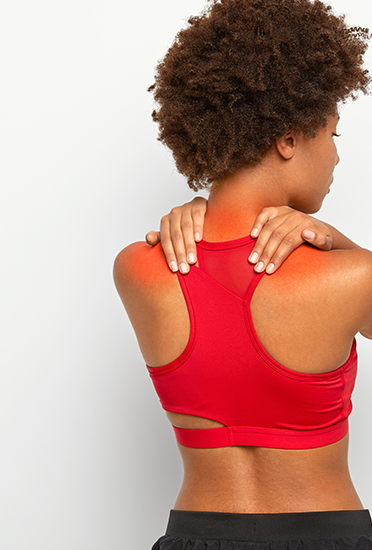AC Joint Arthritis
Four joints make up the shoulder and it’s one of the most complex areas of the body. The AC joint, or acromioclavicular joint, is where the clavicle and the acromion bones meet. When the AC joint becomes inflamed and degenerated, AC joint arthritis often occurs. Once the cartilage begins to wear down, the bones will rub against each other, causing friction. This causes the AC joint to become painful and limits the range of motion.
Over time, the shoulder becomes more painful, irritated, and develops a loss of range of motion. With AC Joint arthritis, tiny bone growths (bone spurs), also known as osteophytes, can impinge the rotator cuff and cause stiffness and pain. AC Joint arthritis is progressive. It can cause anxiety due to the increasing challenge of daily activities and pain.
Dr. Sforzo and Dr. Dillingham both provide excellent treatment options for their patients with AC joint arthritis. They are leaders in providing technically intricate procedures such as total reverse shoulder surgery.
Acromioclavicular Arthritis Symptoms
Acromioclavicular arthritis symptoms are pain in the shoulder, especially the top of the joint, which can radiate into the neck and back. Limitations and loss of range of motion are common, such as lifting an object, placing arms above the head or rotating the shoulder. Snapping or popping noises and sensations are also characteristic symptoms.
AC Joint Arthritis Treatment
Treatment depends on the severity of the shoulder’s degeneration.
Conservative treatment is always an optimal place to start. Resting the shoulder is critical to help tamp down inflammation. Taking NSAIDs (non-steroidal anti-inflammatory drugs) is often helpful and prescription pain medications may be necessary in severe cases.
Physical therapy is highly effective in helping to improve the range of motion, strengthening the surrounding muscles, training patients to avoid reinjury and aiding in healing.
There are also injectables like Viscosupplementation, which helps to relubricate the joint to re-establish a natural gliding sensation. Corticosteroid injections are available as well; these are anti-inflammatory injectables that tamp down swelling internally.
Regenerative medicine is a remarkable way to regenerate damaged tissues directly within the joint. This is a safe and natural alternative to surgery and has helped numerous people find relief and treat the root cause of their condition.
Arthroscopy may be performed for mild to moderate cases of AC joint arthritis. It is a minimally invasive procedure utilizing tiny instruments through small incisions that is under fluoroscopy. During arthroscopy, the surgeon inserts a small camera, called an arthroscope, into the shoulder joint.
Surgery is available in late-stage situations. If surgery is necessary, the recovery time is typically 6 to 12 weeks with physical therapy to prevent reinjury and optimal healing. If AC joint arthritis is caused by RA (rheumatoid arthritis), RA drugs can help alleviate the inflammatory response and ease the pain.
Exercises to Help Relieve Shoulder Arthritis Pain
Exercising the shoulder is essential for function and pain management. A few effective shoulder exercises are as follows:
-
Pendulum
Lean over and place one arm down on top of a table or hard surface. Hold your body with your palm on the table and the other arm hanging at your side. For counts of 10, gently swing your arm back and forth, then side to side, then in small circles. Repeat these 3 to 5 times.
-
Cross Arm Stretch
Standing straight up, gently stretch one arm across your chest, holding your opposite hand on your upper arm, and carefully hold for 30 seconds. Repeat on the other side and alternate for up to 10 times.
-
Walk-Up/Wall-Crawl
Standing slightly away from the wall, touch your fingertips to the wall out in front of you. Gently try and crawl your fingers upwards without shrugging. When you get to a tender spot, stop and breathe into the stretch as you relax your shoulder, then crawl back down to the starting position. Repeat these 3 to 5 times, but do not over-stretch the shoulder.
-
Wall Push-Ups
Standing away from the wall, place your hands on the wall directly in front of your shoulders. Gently push towards the wall (like a push-up) and re-straighten your arms. Repeat up to 10 times.
-
Shoulder Blade Rotations
Standing in a neutral position, gently shrug your shoulders up towards your ears and hold for 5 seconds. Return to the starting position and then press your shoulders back (squeezing upper back muscles) and hold for 5 seconds. Return to the starting position and then pull the shoulder blades down, and hold for 5 seconds. Repeat this sequence 3 to 5 times.
Sforzo | Dillingham | Stewart Orthopedics + Sports Medicine has a group of elite physical therapists on-site making our treatment, patient care and communication convenient for patients and ideal for our practitioners.
Types of Shoulder Arthritis
Osteoarthritis
Osteoarthritis (OA) is the most common form of arthritis. It is caused by a mechanical degeneration of “wear and tear” of the bones and cartilage within the joint structure. When cartilage is thin, the friction on the bones becomes more pronounced, and the joint is less able to function smoothly.
Rheumatoid arthritis
Rheumatoid arthritis (RA) is an autoimmune disease that causes inflammation and swelling in the joints. It happens when the body mistakes healthy tissue for foreign bodies and attacks the joints.
Post-traumatic arthritis
Post-traumatic arthritis (PTA) is osteoarthritis that is a direct result of an injury or trauma to the affected joint. It is often fluid-filled due to the inflammatory response and is extremely painful.
Rotator cuff tear arthropathy
Rotator cuff tear arthropathy is thought to be initiated by rotator cuff tears, but it is a progressive condition with a conglomerate of shoulder issues that happen simultaneously. These often include impingement of the AC joint, rotator cuff insufficiency, glenohumeral joint problems and humeral head erosion, to name a few.
Avascular necrosis
Avascular necrosis happens when there is blood loss and causes the bone tissue to die. In the case of AC joint avascular necrosis, as the bone begins to disintegrate, the entire AC joint will be affected and may collapse. This is often caused by injury but can also be attributed to taking certain medications, steroids and having health conditions.








